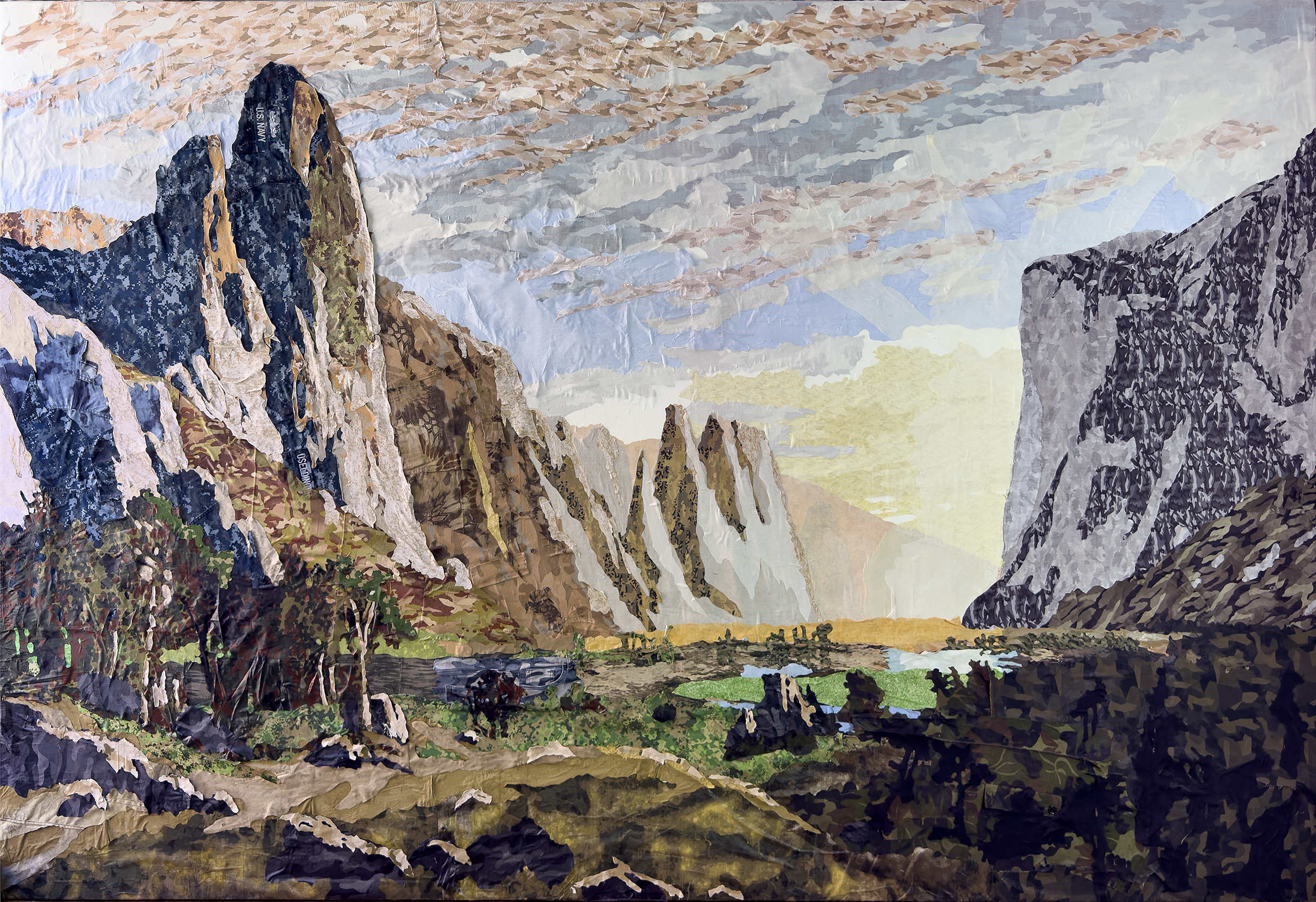Mateo Maté



Biography
Mateo Maté’s work has been the subject of numerous solo exhibitions in national and international institutions and galleries. Highlights include: The World Landscapes Project. Ulsan Art Museum (Ulsan, South Korea, 2023); Landscape (Europe 2021). Weserburg Museum (Bremen, Germany, 2021); Canon. Galeria Palmadotze (Barcelona, 2021); Nazionalismo Domestico. Galleria Nazionale d’Arte Moderna e Contemporanea (Rome, Italy, 2020); Canon. Casal Solleric, Palma de Mallorca / Sala Alcalá 31, Madrid (2018–2017); Fronteras naturales. Galería Isabel Aninat (Santiago, Chile, 2018); La cara oculta. Galeria NF-Nieves Fernández (Madrid, Spain, 2014); Uniformed landscapes. Galerie Max Weber Six Friedrich (Munich, Germany, 2014); El eterno retorno. Museo Romántico, Museo de Artes Decorativas, Museo Lázaro Galdiano, Museo Cerralbo and Biblioteca Nacional (Madrid, Spain, 2013); Universo personal. Museo Reina Sofía (Monasterio de Silos, Burgos, Spain, 2012); Área restringida. Museo Siqueiros (Mexico City, 2011); Actos heróicos. La Gallera (Valencia, Spain, 2011); UCI. Unidad de Cuidados Intensivos. Círculo de Bellas Artes (Madrid, Spain, 2010); Viajo para conocer mi geografía. Matadero (Madrid, Spain, 2010); Reliquias de artista. Museo Patio Herreriano (Valladolid, Spain, 2008); Thanksgiving Turkey. Galería Grita Insam (Vienna, Austria, 2008); Paisajes uniformados. CAB Centro de Arte Caja de Burgos (Burgos, Spain, 2007); Nacionalismo Ibérico. Fundación Encosta (Lisbon, Portugal, 2006); Fronteras interiores. Centro Cultural de España en Lima (Lima, Peru, 2006); Delirios de Grandeza. Galería Grita Insam (Vienna, Austria, 2005); Nacionalismo Doméstico. Galería Oliva Arauna (Madrid, Spain, 2005); Desubicado. Galería Oliva Arauna (Madrid, Spain, 2003); Desubicado. Galerie Six Friedrich Lisa Ungar (Munich, Germany, 2003); Viajo para conocer mi geografía. Centro de Cultura “Sa Nostra” (Palma de Mallorca, Ibiza and Formentera, Spain, 2002), among many others. His work has also been included in group exhibitions around the world. A selection includes: La cultura del paisaje: la montaña, el árbol, el río. Real Jardín Botánico (Madrid, 2025); De lougares e cousas, Banco Sabadell Art Collection. Museo Centro Gaiás. Cidade da cultura (2023); Dialecto, la colección Ca2M. Ca2M, Centro de Arte 2 de Mayo (Móstoles, Spain, 2022); Overdose, From the Galila Barzilaï-Hollander Collection. Design Museum Holon (Holon, Israel, 2022); Myths and Dreams in the Elgiz Collection. Arkas Art Center (Izmir, Turkey, 2022); Bajo la superficie (Miedos, monstruos, sombras). Centro de Arte Conde Duque (Madrid, Spain, 2021); Canciones para una Revolución. Spanish Cultural Centres in San Salvador (El Salvador) and Montevideo (Uruguay), 2021; Back to Nature. Villa Borghese (Rome, Italy, 2020); Coleccionando procesos. 25 años de Itinerarios. Centro Botín (Santander, Spain, 2020); OROI. Queda mucho pasado por delante. Artium (Vitoria, Spain, 2018); Lección de Arte. Museo Nacional Thyssen-Bornemisza (Madrid, Spain, 2017); Lines of Passage (in medias res). The Municipal Art Gallery of Mytilene (Lesbos, Greece, 2016); Turismo efímero. El diálogo iberoamericano. Centro Cultural El Tanque (Santa Cruz de Tenerife, Spain, 2016); Prophetia. La aparición de lo real. Fundació Joan Miró (Barcelona, Spain, 2015); No hablaremos de Picasso. Fundación María José Jove (Santiago de Compostela, Spain, 2015); Hic et nunc, ibi et nunc. Centro Cultural Español, San Salvador; Centro Cultural Español, Tegucigalpa; Centro Cultural Español, Managua; Real Academia de España, Rome (2015); Nuit Blanche Paris (Paris, France, 2014); La guerra che verrà nos è la prima. MART, Museo di Arte Moderna e Contemporanea di Trento e Rovereto (Italy, 2014); Colonia apócrifa. MUSAC, Museo de Arte Contemporáneo de Castilla y León (León, Spain, 2014); Turismo Efímero. Cine Flacso (Quito, Ecuador, 2013); Mappamundi. Hotel des arts Toulon (Toulon, France, 2013); Hic et nunc. Sobre las paradojas de la democracia. Fundación Tàpies (Barcelona, Spain, 2013); Film: hic et nunc: here and now—a survey of new video from Spain. Hirshhorn Museum (Washington, USA, 2011); A Window in Berlin. Mauerpark (Berlin, Germany, 2013); Agenda Santiago. Museo de Arte Contemporáneo de Chile (Santiago, Chile, 2012); Peregrinatio: Sacrificio. Ermitas de Sagunto (Valencia, Spain, 2012); Poéticas del reciclaje: Metraje encontrado. Instituto Cervantes de París (Paris, France, 2012); Delimitations. The Herzliya Museum of Contemporary Art (Tel Aviv, Israel, 2011); Colección III. Centro de Arte 2 de mayo (Madrid, Spain, 2011); Mappamundi. Museu Colecção Berardo (Lisbon, Portugal, 2011); El Ángel Exterminador. Bozar (Brussels, Belgium, 2010); España Contemporánea. Castel dell’Ovo (Naples, Italy, 2010); Insert coin. Spanish Contemporary Art. PARA-SITE (Hong Kong, China, 2009); Low key. Fundación Marcelino Botín (Santander, Spain, 2008); Levantamiento. Centro de Arte 2 de Mayo (Madrid, Spain, 2008); España – Arte Espagnola 1957 – 2007. Palazzo Sant´Elia (Palermo, Italy, 2008); Parangolé. Museo Patio Herreriano (Valladolid, Spain, 2008); Cine y casi cine 2. Museo Reina Sofía (Madrid, Spain, 2007); VideoBrasil. SESC São Paulo (São Paulo, Brazil, 2007); Rencontres Internacionales. Jeu de Paume (Paris, France, 2007); Cine y casi cine. Museo Reina Sofía (Madrid, Spain, 2005); Fondo de arte. Fundación Marcelino Botín (Santander, Spain, 2005); El Real Viaje Real. El Retorno. Museo Patio Herreriano (Valladolid, Spain, 2004); The Real Royal Trip. P.S.1. MoMA (New York, USA, 2003); Catastrofi Minime. Museo del Nuoro (Sardinia, Italy, 2003), among many others. His work is included in numerous public and private collections, both national and international: Galleria Nazionale d’Arte Moderna (Rome, Italy), Weserburg Museum (Bremen, Germany), Elgiz Collection, Centro Botín, Banco Sabadell Collection, Fundación M (Mexico City), Museo Patio Herreriano, Artium, Ca2M, Fundación María José Jové, among others.
